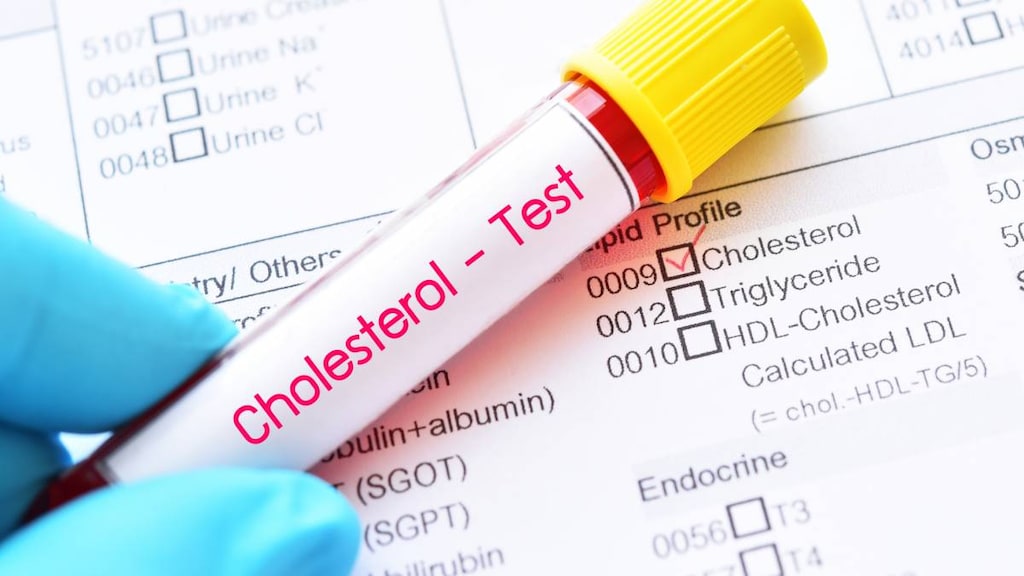
What is dyslipidemia?
Dyslipidemia is the term used to describe abnormal cholesterol (lipoproteins) levels in the blood.
A test called a blood lipid panel measures or calculates four different types of lipoproteins in our blood: total cholesterol (TC), low-density lipoprotein (LDL), high-density lipoprotein (HDL), and triglycerides (TG).
In people with dyslipidemia, levels of TC, LDL cholesterol, or triglycerides may be increased (these are considered “bad” cholesterols), or levels of HDL cholesterol may be decreased (HDL is considered "good" cholesterol).
Cholesterol is a type of fat, also called a lipid.
What causes dyslipidemia?
Cholesterol is vital for the normal functioning of our cells and our body uses cholesterol to manufacture cell membranes, hormones and vitamin D. We get cholesterol from our diet and our liver also makes cholesterol.
Dyslipidemia occurs when levels of the different types of cholesterol in our blood get out of balance.
Causes include:
- Obesity or increased body fat
- Cushing syndrome
- Diabetes
- Genetic reasons (eg, Familial hypercholesterolemia)
- High blood pressure
- Hypothyroidism
- Lack of exercise
- Medications (eg, anticonvulsants, antipsychotics, hormones, thiazide or loop diuretics)
- Metabolic syndrome
- Polycystic ovary syndrome
- Smoking
What are the symptoms of dyslipidemia?
Dyslipidemia does not cause any symptoms, and for some people, the first time they are diagnosed with dyslipidemia is after they develop other conditions, such as heart disease or circulation problems, or following a heart attack or stroke.
Dyslipidemia is a factor in coronary heart disease (also called atherosclerosis). If damage occurs to the inner layers of the arteries, platelets stick to the site of the injury and may clump together to form blood clots. Cholesterol, calcium and other substances in the blood also build up at this site of injury and harden into plaques, narrowing the arteries and limiting blood flow to the heart muscle and other parts of the body. Narrowing of the arteries increases a person’s risk of having a heart attack or stroke and reduces blood flow to the limbs, particularly the legs.
How is dyslipidemia diagnosed?
Because dyslipidemia has no symptoms, the Centers for Disease Control (CDC) and prevention recommend high cholesterol should be screened for, starting from a young age.
The CDC recommends cholesterol screening tests should be done:
- Before puberty (once between the ages of 9 and 11)
- After puberty (once between the ages of 17 and 21)
- Every 4 to 6 years after the age of 21
People with obesity, diabetes, or a family history of heart attacks or heart disease at a young age, should be screened for high cholesterol more often.
The most common types of dyslipidemia diagnosed include:
- High levels of LDL cholesterol (this causes fat to build-up in the arteries)
- Low levels of HDL cholesterol (HDL protects the heart by removing LDL build-up from the arteries)
- High levels of triglycerides (this causes fat to build-up in the arteries)
How is dyslipidemia treated?
Treatment depends on a person’s level of risk for heart disease or stroke.
Treatment aims to lower TC, LDL cholesterol, and triglyceride levels or improve HDL levels. Current goals include:
- Total cholesterol: Less than 200 mg/dL
- LDL cholesterol: Less than 100 mg/dL or less than 70 mg/dL for people with diabetes or heart disease
- Triglycerides: Less than 150 mg/dL
- HDL cholesterol: Above 40 mg/dL (men) above 50 mg/dL (women)
Treatment includes:
- Lifestyle changes, such as eating a healthy diet, avoiding saturated fat, eating more vegetables
- Increasing physical activity and exercise
- Losing weight if you are overweight
- Stopping smoking
- Medications, such as statins (eg, atorvastatin, fluvastatin, lovastatin), niacin, bile acid resins, ezetimibe, fibrates, or PCSK9 Inhibitors (eg, alirocumab, evolocumab)




